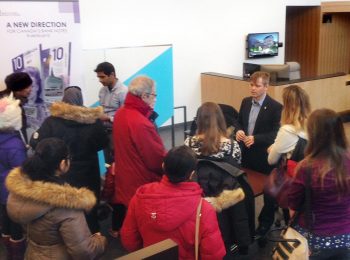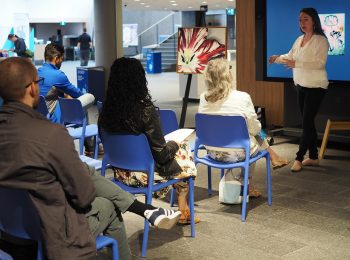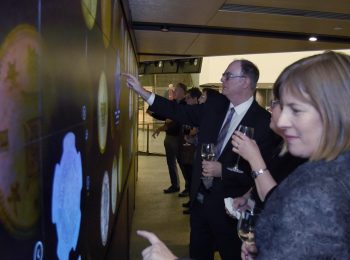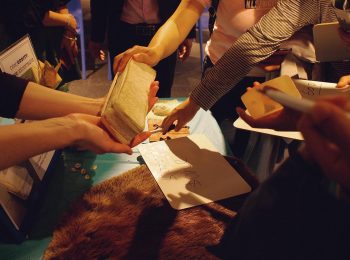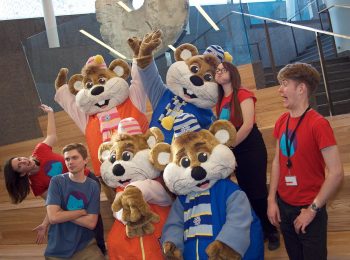Celebrating a bang-up first year—by the numbers
Wow, cake decorating has come a long way! It was tasty, too.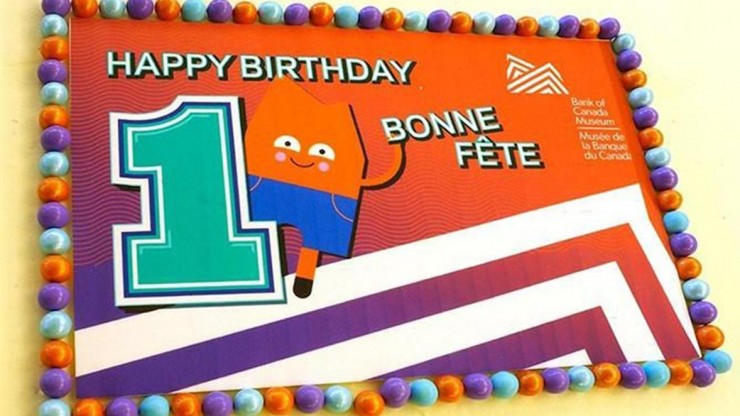
Forgetting a birthday is an unforgivable sin in most families. But at the Museum, we were so caught up in our Canada Day programming that thoughts about our first birthday got pushed to the back of our collective mind. Luckily, somebody at the office was on the ball and we held a brief celebration with the whole Bank Communications Department the following Tuesday morning. There was plenty of cake and plenty to celebrate.
In 2017, in the first 6 months of operation, we welcomed 40,000 people through our doors; in our first full year our visitor numbers pushed past 70,000. That’s a 91 per cent over the numbers from our last year before closing (pause while the audience claps). And for icing on the birthday cake, we logged nearly as many guests for our 2018 Canada Day event as we clocked for those coming through the doors during our grand opening.
Our first birthday was the hottest Canada Day in recent memory. But we still welcomed over 2,700 visitors.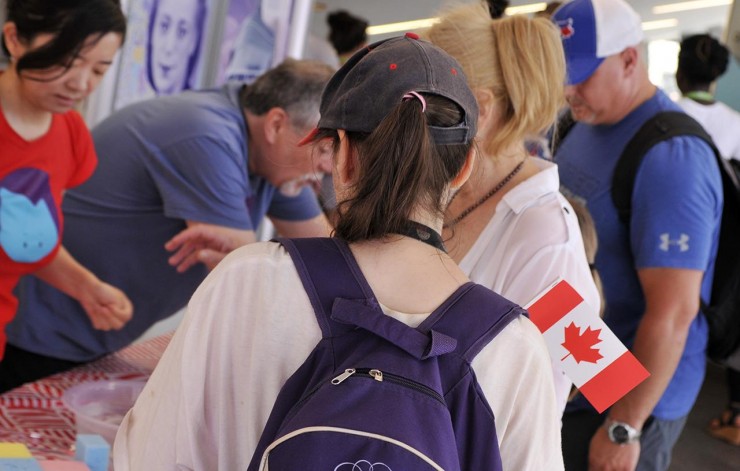
Both of those times, and for all the times in between, our Visitor Services Team rose to the challenge. Most of our first year’s events drew—easily—double the numbers of their 2012 counterparts, as we welcomed people for a broad variety of activities and themed programming on topics from tulips to counterfeiting. Police officers, artists, trappers, currency experts and our own curators popped in to help make the programming a success with speeches, displays and tours. For Doors Open 2018, our numbers were a whopping four times the figures we saw the last time we participated in this event, with visitors showing a surprising appetite for the guided tour format. Growing interest in guided tours has prompted us to add them to our 2018 summer season schedule. Drop by and check them out.
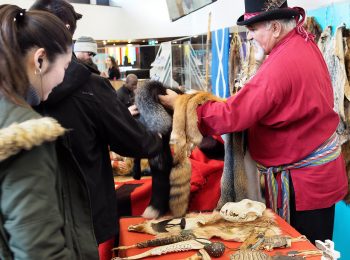
During our Winterlude events, fur trapper and educator Archie Martin displayed trapping artifacts while he told stories about the fur trade.
Running a museum is always going to be a learning process, but year one is especially intense. It’s when you learn that demonstrating the stain resistance of polymer bank notes results in guides with blue fingers; it’s how you figure out just how quickly complimentary ice cream can disappear on the hottest Canada Day on record; where you see that people really, really like to touch props and artifacts (particularly soft, furry ones); and how you discover that in an age of do‑it‑yourself museum tours, lots of folks still like a little knowledgeable guidance. Next year’s learning curve should be slightly flatter. Or not...
OK, I just tooted our horn for over 600 words and I did it mostly with statistics (we are a central bank museum, after all). Still, thanks for your patience with our shameless bragging and an even bigger thanks for your wonderful patronage during our first year of operation. You deserve a slice of cake as well, but I’m afraid we finished it all.
The Museum Blog
Money of the First World War
By: Paul S. Berry
Money’s Magnificent Moustaches
By: Graham Iddon
The Devil is in the Hairdo
By: Graham Iddon
Canada Financially Comes of Age
By: Paul S. Berry
#AskACurator Day 2018
By: Graham Iddon
Sculptor Dora de Pédery-Hunt
Operation Fish
By: Robert Low
New Acquisitions
By: Paul S. Berry
The Bank-NOTEable Woman is Here!
By: Graham Iddon
